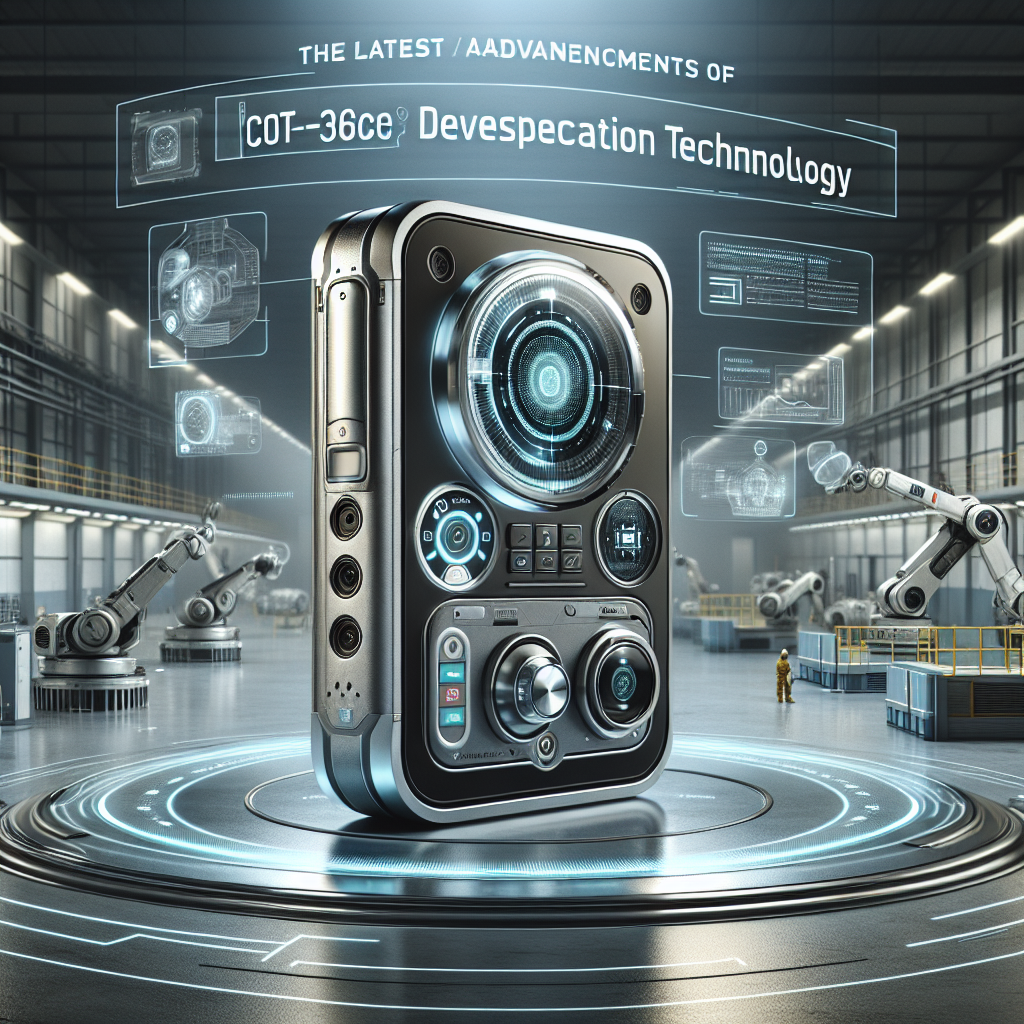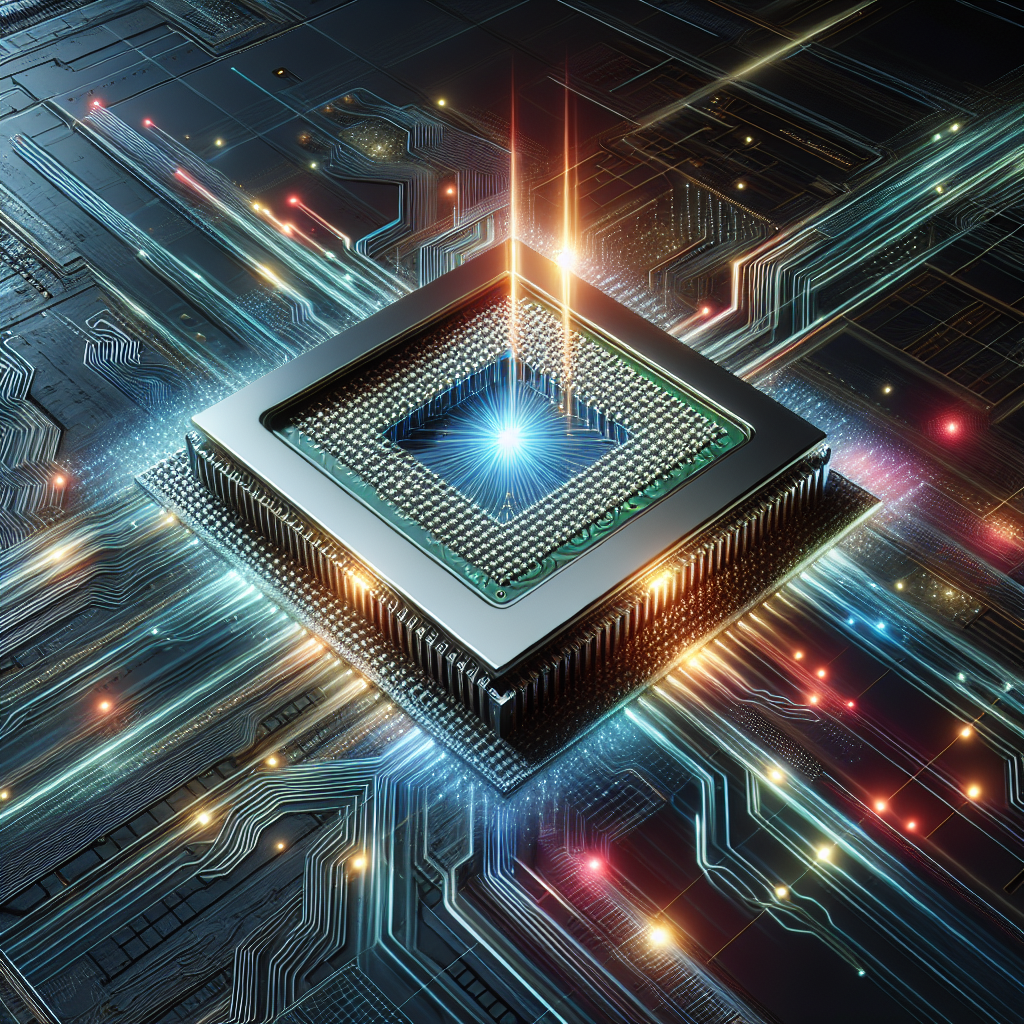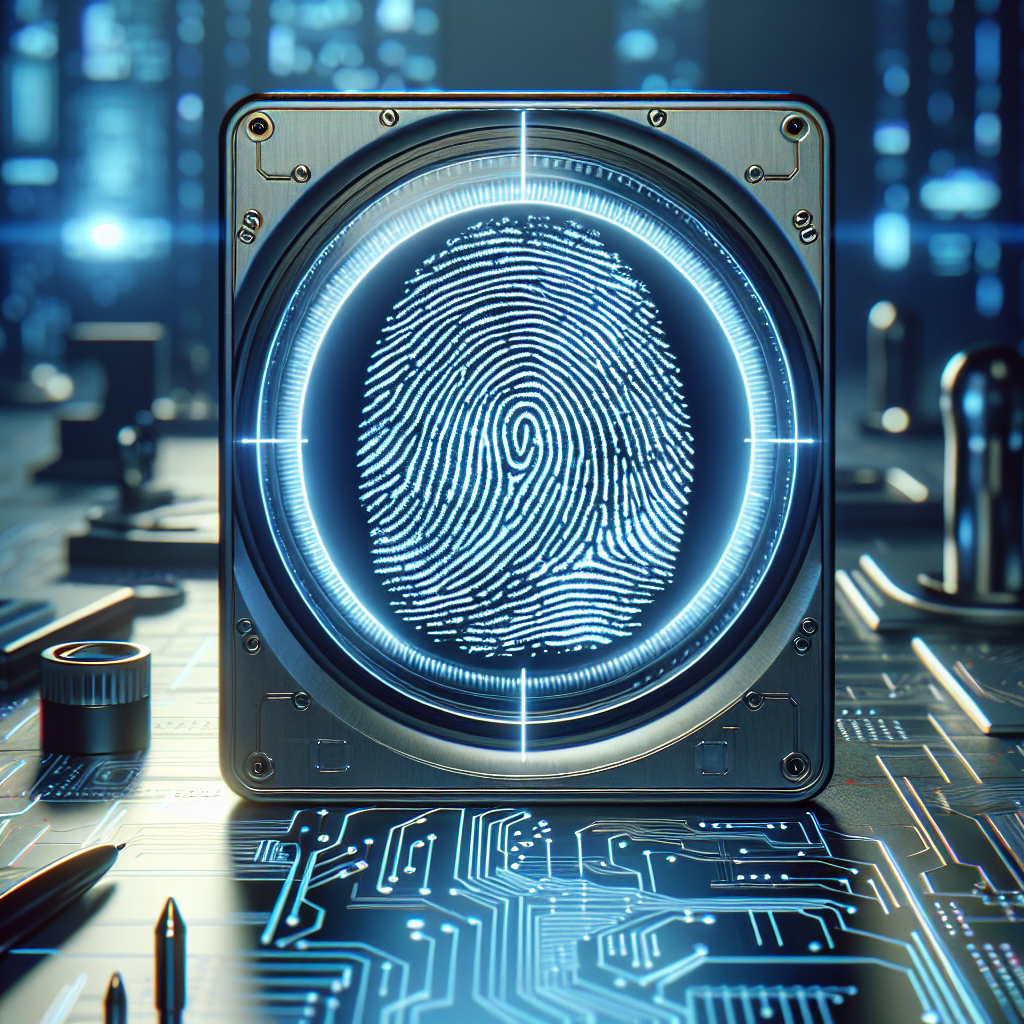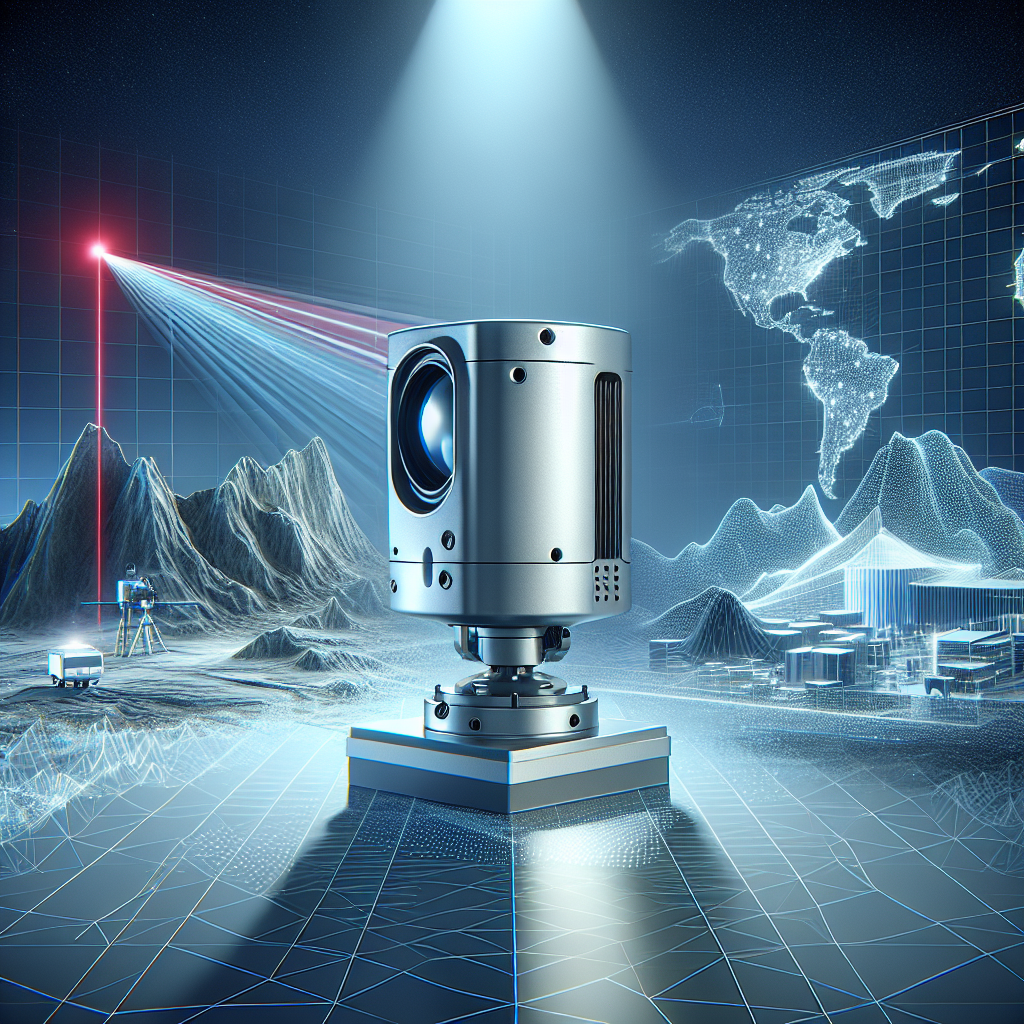Your cart is currently empty!
Tag: Advancements

Innovating for the Future: Leaders Driving Networking Technology Advancements
Innovating for the Future: Leaders Driving Networking Technology AdvancementsIn today’s fast-paced and interconnected world, networking technology plays a crucial role in connecting people, devices, and systems. As technology continues to evolve at a rapid pace, it is essential for leaders in the industry to drive advancements in networking technology to meet the demands of the future.
One such leader who has been at the forefront of driving networking technology advancements is Satya Nadella, the CEO of Microsoft. Under his leadership, Microsoft has focused on developing cutting-edge networking technologies that enable seamless connectivity and collaboration across devices and platforms. One of the key innovations that Microsoft has introduced is Azure, a cloud computing platform that provides a scalable and flexible networking infrastructure for businesses of all sizes.
Another leader in the networking technology space is Chuck Robbins, the CEO of Cisco Systems. Cisco has long been a pioneer in networking technology, and under Robbins’ leadership, the company has continued to push the boundaries of what is possible in networking. Cisco’s networking solutions, such as its intent-based networking platform, are designed to provide businesses with the agility and flexibility they need to adapt to changing market conditions.
In addition to industry giants like Microsoft and Cisco, there are also a number of smaller companies that are driving networking technology advancements. One such company is Arista Networks, a leader in the development of high-performance networking solutions for data centers and cloud computing environments. Arista’s networking products are known for their speed, reliability, and scalability, making them a popular choice for businesses looking to upgrade their networking infrastructure.
As the demand for faster, more reliable networking technology continues to grow, it is clear that leaders in the industry will play a critical role in driving advancements in this space. By investing in research and development, collaborating with industry partners, and staying ahead of emerging trends, these leaders will ensure that businesses are equipped with the networking technology they need to succeed in the digital age.
In conclusion, leaders in the networking technology industry are driving advancements that will shape the future of connectivity and collaboration. By investing in innovation and staying ahead of the curve, these leaders are ensuring that businesses have access to the networking technology they need to thrive in an increasingly interconnected world. As technology continues to evolve, it is clear that these leaders will play a key role in shaping the future of networking technology for years to come.
#Innovating #Future #Leaders #Driving #Networking #Technology #Advancements,who is at the forefront of networking technology innovations?
The Evolution of HDR 10: A Look at the Advancements in High Dynamic Range Technology
High Dynamic Range (HDR) technology has revolutionized the way we experience visual content on our screens. The technology enhances the contrast and color range of images, making them more vibrant and lifelike. One of the most popular HDR formats is HDR 10, which has seen significant advancements in recent years.HDR 10 was first introduced in 2015 and quickly became the industry standard for high dynamic range content. The format allows for a wider range of colors and brightness levels, resulting in more realistic and immersive images. However, the early versions of HDR 10 had some limitations, such as a fixed peak brightness level and a lack of dynamic metadata.
In response to these limitations, the industry developed HDR 10+, an updated version of the format that includes dynamic metadata. This allows for scene-by-scene optimization of brightness levels, resulting in a more accurate representation of the original content. HDR 10+ also supports a higher peak brightness level, providing an even more lifelike viewing experience.
Another advancement in HDR 10 technology is the introduction of Dolby Vision, a competing format that offers even greater color accuracy and brightness levels. Dolby Vision uses dynamic metadata to optimize the viewing experience on a scene-by-scene basis, resulting in stunning visuals that are true to the original content.
Despite the competition from formats like Dolby Vision, HDR 10 remains a popular choice for content creators and consumers alike. Its widespread adoption in devices and streaming services ensures that viewers have access to a wide range of HDR content.
Looking to the future, we can expect even more advancements in HDR technology. Manufacturers are constantly pushing the boundaries of what is possible with high dynamic range, developing new technologies that offer even greater contrast, color accuracy, and brightness levels.
In conclusion, the evolution of HDR 10 has brought significant advancements in high dynamic range technology. With improved peak brightness levels, dynamic metadata, and competition from formats like Dolby Vision, viewers can expect an even more immersive and lifelike viewing experience in the years to come.
#Evolution #HDR #Advancements #High #Dynamic #Range #Technology,hdr 10
The Role of Co-9051052-WW in Driving Technological Advancements
Technology has become an integral part of our daily lives, from the way we communicate and work to how we entertain ourselves. Behind the scenes, there are countless innovations and advancements that drive the continuous evolution of technology. One key player in this process is Co-9051052-WW, a company that has been at the forefront of driving technological advancements.Co-9051052-WW is a leading provider of cutting-edge technology solutions, specializing in areas such as artificial intelligence, machine learning, cloud computing, and cybersecurity. The company’s innovative products and services have helped businesses and individuals alike harness the power of technology to solve complex problems, streamline processes, and improve efficiency.
One of the key roles that Co-9051052-WW plays in driving technological advancements is through its research and development efforts. The company invests heavily in research to stay ahead of the curve and develop new technologies that will shape the future. By pushing the boundaries of what is possible, Co-9051052-WW is able to create solutions that are not only innovative but also practical and impactful.
Another important role that Co-9051052-WW plays in driving technological advancements is through partnerships and collaborations. The company works closely with other technology companies, research institutions, and industry experts to exchange ideas, share knowledge, and collaborate on projects that push the boundaries of what is possible. By bringing together the best minds in the industry, Co-9051052-WW is able to leverage their expertise and resources to drive innovation and create groundbreaking technologies.
Furthermore, Co-9051052-WW plays a crucial role in driving technological advancements by providing education and training opportunities. The company offers workshops, seminars, and training programs to help individuals and organizations stay up-to-date on the latest technologies and trends. By empowering people with the knowledge and skills they need to succeed in the digital age, Co-9051052-WW is helping to drive technological advancements and shape the future of technology.
In conclusion, Co-9051052-WW plays a vital role in driving technological advancements through its research and development efforts, partnerships and collaborations, and education and training programs. By pushing the boundaries of what is possible, collaborating with industry experts, and empowering individuals with the skills they need to succeed, Co-9051052-WW is helping to shape the future of technology and drive innovation forward. As technology continues to evolve at a rapid pace, companies like Co-9051052-WW will play a key role in driving technological advancements and shaping the digital landscape for years to come.
#Role #Co9051052WW #Driving #Technological #Advancements,co-9051052-ww
The Future of Co-9051052-WW: Innovations and Advancements
As technology continues to advance at an exponential rate, the future of Co-9051052-WW looks brighter than ever. This cutting-edge technology has the potential to revolutionize industries across the board, from healthcare to manufacturing to entertainment. With its innovative features and advancements, Co-9051052-WW is set to change the way we live and work in ways we never thought possible.One of the most exciting innovations in Co-9051052-WW is its ability to connect and communicate with other devices in real-time. This interconnected network of devices, known as the Internet of Things (IoT), allows for seamless communication between machines, sensors, and people. This opens up a world of possibilities for automation, data analysis, and decision-making.
In addition to its connectivity, Co-9051052-WW also boasts advanced artificial intelligence capabilities. This means that the technology can learn and adapt to new information, making it smarter and more efficient over time. This AI-powered functionality can be applied to a wide range of tasks, from predictive maintenance in industrial settings to personalized healthcare recommendations for individuals.
Furthermore, Co-9051052-WW is also making waves in the field of renewable energy. With its ability to harness solar and wind power efficiently, this technology has the potential to reduce our dependence on fossil fuels and mitigate the effects of climate change. By incorporating Co-9051052-WW into our energy systems, we can create a more sustainable and environmentally friendly future for generations to come.
In the realm of healthcare, Co-9051052-WW is poised to revolutionize the way we diagnose and treat diseases. Its advanced imaging and diagnostic capabilities can provide doctors with unprecedented insights into a patient’s condition, leading to more accurate and timely treatment plans. Additionally, Co-9051052-WW can also be used to monitor patients remotely, allowing for more personalized and efficient healthcare delivery.
Overall, the future of Co-9051052-WW is bright and full of potential. With its innovative features and advancements, this technology is set to transform industries and improve our quality of life in ways we never thought possible. As we continue to push the boundaries of what is possible with Co-9051052-WW, the possibilities for innovation and advancement are truly endless.
#Future #Co9051052WW #Innovations #Advancements,co-9051052-ww
The Latest Advancements in Inspection Technology: Introducing the Sama SM360 Pro
As technology continues to advance at a rapid pace, industries are constantly looking for ways to improve their processes and increase efficiency. One area that has seen significant advancements in recent years is inspection technology. One of the latest innovations in this field is the Sama SM360 Pro, a cutting-edge inspection system that promises to revolutionize the way inspections are carried out.The Sama SM360 Pro is a state-of-the-art inspection system that combines advanced imaging technology with artificial intelligence to provide highly accurate and reliable inspection results. The system is equipped with a high-resolution camera that can capture images with incredible detail, allowing it to detect even the smallest defects or imperfections in a wide range of products.
One of the key features of the Sama SM360 Pro is its ability to perform inspections at high speeds, making it ideal for use in industries where efficiency is paramount. The system can analyze thousands of products per minute, ensuring that quality control processes are carried out quickly and effectively.
In addition to its speed and accuracy, the Sama SM360 Pro also offers a range of advanced inspection capabilities. The system can be programmed to detect a variety of defects, such as scratches, dents, cracks, and foreign particles, ensuring that products meet the highest quality standards.
Another standout feature of the Sama SM360 Pro is its user-friendly interface, which allows operators to easily set up and customize inspections to suit their specific requirements. The system is also equipped with a range of connectivity options, including Ethernet and USB ports, making it easy to integrate with existing production lines and data management systems.
Overall, the Sama SM360 Pro represents a significant advancement in inspection technology, offering industry-leading performance, accuracy, and efficiency. With its advanced imaging technology and artificial intelligence capabilities, this system is set to revolutionize the way inspections are carried out across a wide range of industries.
#Latest #Advancements #Inspection #Technology #Introducing #Sama #SM360 #Pro,sama sm360 pro
AS985: The Latest Advancements in Processor Technology
In the fast-paced world of technology, advancements are constantly being made to improve the performance and efficiency of processors. One of the latest breakthroughs in processor technology is the AS985, a cutting-edge processor that is revolutionizing the way we use and interact with technology.The AS985 is a highly advanced processor that offers a wide range of benefits and features that make it a top choice for tech enthusiasts and professionals alike. One of the key features of the AS985 is its speed and efficiency. With a clock speed of up to 3.5 GHz, the AS985 is able to handle even the most demanding tasks with ease, making it ideal for gaming, video editing, and other high-performance applications.
In addition to its impressive speed, the AS985 also offers enhanced power efficiency, thanks to its advanced architecture and design. This means that users can enjoy longer battery life and lower energy consumption, making the AS985 a more environmentally friendly option compared to other processors on the market.
Another standout feature of the AS985 is its support for advanced technologies such as artificial intelligence and machine learning. With built-in AI capabilities, the AS985 is able to optimize performance and enhance user experiences by learning and adapting to user behavior over time. This makes the AS985 a versatile processor that can be used in a wide range of applications, from smartphones and laptops to data centers and IoT devices.
Overall, the AS985 represents the latest advancements in processor technology, offering users a powerful and efficient solution for their computing needs. With its impressive speed, energy efficiency, and support for advanced technologies, the AS985 is sure to be a game-changer in the world of technology. Whether you’re a casual user or a professional, the AS985 is a processor that is worth considering for your next device.
#AS985 #Latest #Advancements #Processor #Technology,as985
Fingerprint Technology: Advancements and Applications in the Digital Age
In today’s digital age, fingerprint technology has become an increasingly important tool in various industries and applications. From unlocking smartphones to securing sensitive data, fingerprint technology has come a long way in terms of advancements and applications.One of the key advancements in fingerprint technology is the development of more accurate and reliable sensors. Traditional fingerprint sensors used to be easily fooled by fake prints or could be difficult to read in certain conditions. However, with the introduction of capacitive sensors, which capture a 3D image of the fingerprint, the accuracy and reliability of fingerprint recognition have greatly improved.
Another important advancement in fingerprint technology is the incorporation of artificial intelligence (AI) and machine learning algorithms. These algorithms are able to analyze and identify unique patterns in fingerprints, making the recognition process faster and more efficient. This has enabled fingerprint technology to be used in a wide range of applications, from biometric authentication to forensic investigations.
In terms of applications, fingerprint technology is being used in various industries such as banking, healthcare, and law enforcement. In the banking industry, fingerprint technology is being used to improve security measures and prevent fraudulent activities. Customers can now use their fingerprints to access their accounts or make transactions, eliminating the need for passwords or PIN codes.
In the healthcare industry, fingerprint technology is being used to securely store patient information and improve patient identification. By using fingerprints as a form of biometric authentication, healthcare providers can ensure that only authorized personnel have access to sensitive medical records.
Law enforcement agencies are also benefiting from the advancements in fingerprint technology. Fingerprint recognition is being used to identify suspects, track criminal activities, and solve cases more efficiently. The ability to quickly match fingerprints to a database of known criminals has revolutionized the way law enforcement agencies investigate crimes.
Overall, fingerprint technology has come a long way in terms of advancements and applications in the digital age. With improved sensors and AI algorithms, fingerprint recognition has become more accurate and reliable than ever before. From securing smartphones to solving crimes, the applications of fingerprint technology are endless and will continue to evolve as technology progresses.
#Fingerprint #Technology #Advancements #Applications #Digital #Age,fingerprint
Exploring the Advancements of Nvidia’s Lidar Technology
Nvidia, a leading technology company known for its graphics processing units (GPUs) and artificial intelligence (AI) technology, has been making significant advancements in the field of lidar technology. Lidar, short for light detection and ranging, is a remote sensing method that uses light in the form of a pulsed laser to measure variable distances to the Earth.Nvidia’s lidar technology is designed to improve the performance and accuracy of autonomous vehicles, robotics, and other applications that require precise 3D mapping and object detection. By integrating lidar sensors with Nvidia’s powerful GPUs and AI software, these systems can better understand their surroundings and make informed decisions in real time.
One of the key advancements in Nvidia’s lidar technology is its ability to process large amounts of data quickly and efficiently. Lidar sensors generate a huge amount of point cloud data that needs to be processed and analyzed in real time to make sense of the environment. Nvidia’s GPUs are well-suited for handling this data-intensive task, allowing autonomous vehicles to navigate complex environments with ease.
Another key feature of Nvidia’s lidar technology is its ability to accurately detect and classify objects in the environment. Lidar sensors can provide high-resolution 3D maps of the surrounding area, allowing autonomous vehicles to identify and avoid obstacles such as other vehicles, pedestrians, and road signs. Nvidia’s AI software can analyze this data and make decisions on the fly, ensuring safe and efficient navigation.
Nvidia’s lidar technology is also being used in other industries beyond autonomous vehicles. For example, lidar sensors are being used in agriculture to monitor crop health and optimize irrigation, in construction to map building sites and track progress, and in forestry to survey forests and monitor wildlife populations. By leveraging Nvidia’s powerful GPUs and AI algorithms, these applications can benefit from the increased accuracy and efficiency of lidar technology.
In conclusion, Nvidia’s advancements in lidar technology are paving the way for a future where autonomous vehicles and other applications can navigate and interact with the world around them more effectively. By integrating lidar sensors with powerful GPUs and AI software, Nvidia is helping to push the boundaries of what is possible in the field of remote sensing and 3D mapping. As technology continues to evolve, we can expect to see even more exciting developments in Nvidia’s lidar technology in the years to come.
#Exploring #Advancements #Nvidias #Lidar #Technology,nvidia lidar
Quantum and Blockchain for Modern Computing Systems: Vision and Advancements: Qu

Quantum and Blockchain for Modern Computing Systems: Vision and Advancements: Qu
Price : 158.20
Ends on : N/A
View on eBay
antum computing and blockchain technology are two cutting-edge innovations that have the potential to revolutionize the way we think about computing systems. While quantum computing focuses on harnessing the power of quantum mechanics to perform calculations at speeds far beyond what is possible with traditional computers, blockchain technology is a decentralized and secure way to store and transfer data.The integration of quantum computing and blockchain technology has the potential to bring about significant advancements in modern computing systems. By combining the speed and power of quantum computing with the security and transparency of blockchain technology, we can create a new generation of computing systems that are faster, more secure, and more efficient than ever before.
One of the key benefits of integrating quantum computing and blockchain technology is the ability to create more secure and tamper-proof systems. Blockchain technology uses cryptographic techniques to secure data and transactions, making it virtually impossible for hackers to tamper with or alter the information stored on the blockchain. By using quantum computing to enhance the encryption and security measures of blockchain technology, we can create systems that are even more secure and resistant to cyber attacks.
Another advantage of combining quantum computing and blockchain technology is the potential to improve the speed and efficiency of computing systems. Quantum computers are capable of performing complex calculations at speeds that are orders of magnitude faster than traditional computers, making them ideal for tasks that require massive amounts of computational power. By integrating quantum computing with blockchain technology, we can create systems that are not only faster and more efficient, but also more scalable and adaptable to a wide range of applications.
Overall, the vision of combining quantum computing and blockchain technology for modern computing systems is a promising one. With advancements in both fields continuing to progress, we can expect to see new and innovative applications of these technologies that will shape the future of computing systems for years to come.
#Quantum #Blockchain #Modern #Computing #Systems #Vision #Advancements
Advancements in Recurrent Neural Networks: A Deep Dive into Gated Architectures
Recurrent Neural Networks (RNNs) have been widely used in various machine learning applications, from natural language processing to speech recognition. In recent years, there have been significant advancements in RNN architectures, particularly with the introduction of gated architectures such as Long Short-Term Memory (LSTM) and Gated Recurrent Unit (GRU). These gated architectures have greatly improved the performance of RNNs by addressing the vanishing gradient problem and enabling the networks to better capture long-range dependencies in sequential data.One of the key challenges with traditional RNNs is the vanishing gradient problem, where gradients become very small as they are back-propagated through time, leading to difficulties in training the network effectively. Gated architectures like LSTM and GRU address this issue by introducing mechanisms that control the flow of information through the network, allowing it to retain important information over longer time scales.
LSTM, introduced by Hochreiter and Schmidhuber in 1997, consists of three gates – input, forget, and output – that regulate the flow of information in and out of the cell state. The input gate controls which information to update in the cell state, the forget gate determines which information to discard, and the output gate decides which information to output to the next layer. This architecture enables LSTM to learn long-term dependencies by selectively retaining and updating information in the cell state.
GRU, proposed by Cho et al. in 2014, simplifies the architecture of LSTM by combining the forget and input gates into a single update gate. This reduces the number of parameters in the network and makes it computationally more efficient. Despite its simplicity, GRU has been shown to achieve comparable performance to LSTM in many tasks.
These gated architectures have significantly improved the performance of RNNs in various applications. In natural language processing, for example, LSTM and GRU have been used for tasks such as language modeling, machine translation, and sentiment analysis, achieving state-of-the-art results in many benchmarks. In speech recognition, gated RNNs have been employed to model speech signals and improve accuracy in speech-to-text systems.
In conclusion, the advancements in gated architectures for RNNs have revolutionized the field of deep learning by enabling the networks to better model sequential data and capture long-range dependencies. LSTM and GRU have become essential tools in a wide range of applications, from text and speech processing to time series analysis. As researchers continue to explore new architectures and techniques, we can expect further improvements in the performance and capabilities of recurrent neural networks.
#Advancements #Recurrent #Neural #Networks #Deep #Dive #Gated #Architectures,recurrent neural networks: from simple to gated architectures
